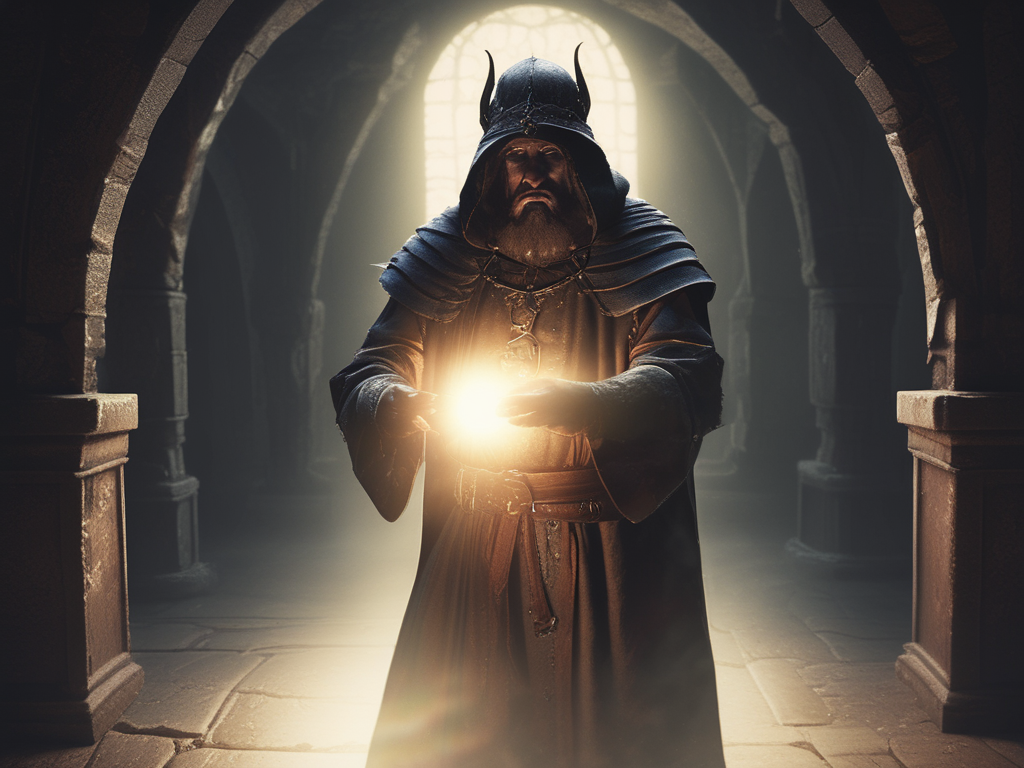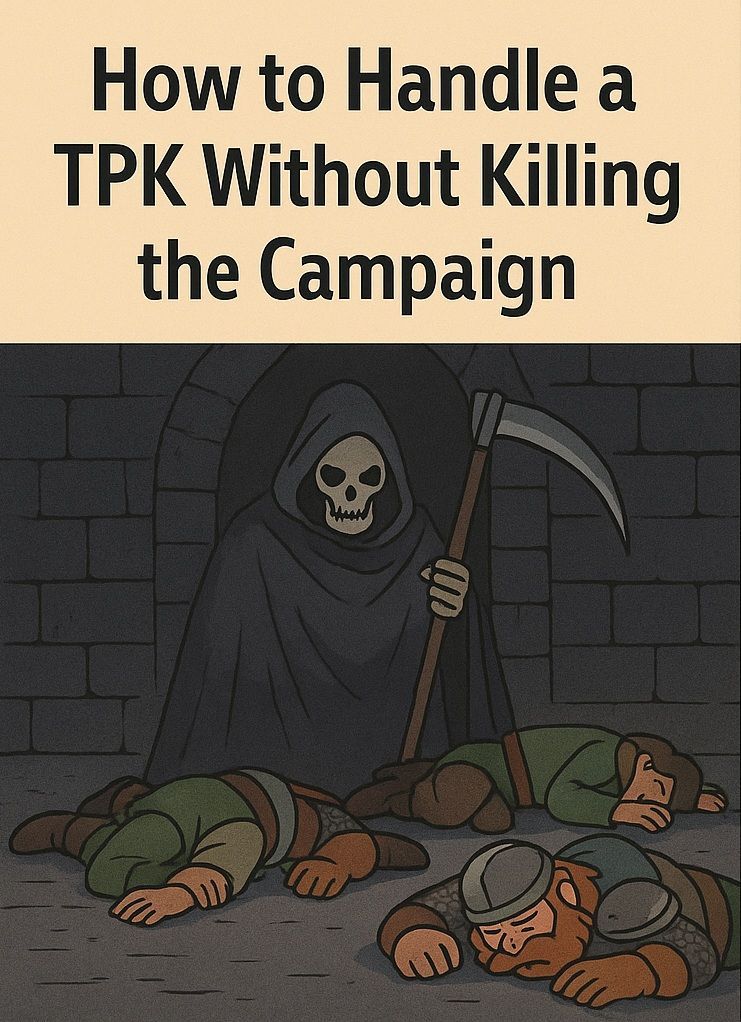Villain Redemption Arcs: Exploring the Possibility of Redeeming Antagonists

Dear Readers, welcome back to our Dungeons & Dragons (D&D) blog! Today, we’re delving into a fascinating and often underexplored aspect of storytelling: the redemption arc of villains. In many campaigns, villains are portrayed as irredeemable antagonists, their fate sealed by the heroes’ swords or spells. However, exploring the possibility of redeeming antagonists can add depth and complexity to your narrative, creating a richer and more engaging experience for your players. In this post, we’ll discuss the elements of a compelling redemption arc, offer tips for integrating these arcs into your campaign, and provide examples to inspire your storytelling. So, let’s embark on this journey to uncover the transformative power of redemption in your D&D campaigns.
The Power of Redemption in Storytelling
Redemption arcs are powerful because they reflect the potential for change and growth, even in those who have walked a dark path. They resonate with themes of forgiveness, transformation, and the complexity of human nature. In the context of a D&D campaign, a villain’s redemption can introduce moral dilemmas, challenge the players’ perceptions, and add emotional weight to the story.
Why Redemption Arcs Matter:
1. Emotional Depth:
- Redemption arcs add emotional depth to your narrative. Seeing a villain struggle with their past deeds and strive for a better path can be incredibly moving.
2. Moral Complexity:
- Redeeming a villain introduces moral complexity, forcing players to confront difficult questions about justice, forgiveness, and the nature of evil.
3. Dynamic Storytelling:
- A redemption arc can transform the narrative, turning a former enemy into a reluctant ally or even a friend. This dynamic shift can create unexpected plot twists and character development.
4. Player Engagement:
- Players become more invested in the story when they see that their actions can influence the world in profound ways, including the potential to redeem those who once opposed them.
Elements of a Compelling Redemption Arc
Creating a compelling redemption arc for a villain requires careful planning and a nuanced approach. Here are some key elements to consider:
1. Genuine Motivation for Change
For a redemption arc to feel authentic, the villain must have a genuine motivation for change. This motivation can stem from a variety of sources, such as a traumatic event, a personal revelation, or the influence of the heroes.
Examples of Motivations:
a. Personal Loss:
- The villain suffers a personal loss that makes them reevaluate their actions and goals.
Example: A warlord who loses a beloved family member in battle may begin to question the endless cycle of violence and seek a path of peace.
b. Acts of Kindness:
- The heroes show the villain kindness or mercy, sparking a desire to change.
Example: A bandit leader spared by the heroes decides to abandon their life of crime and make amends for their past deeds.
c. Moral Awakening:
- The villain experiences a moral awakening, realizing the harm they have caused and seeking redemption.
Example: A necromancer who witnesses the suffering of innocent people because of their actions might seek to undo the damage they have caused.
2. Gradual Transformation
A believable redemption arc is gradual, with the villain slowly transforming over time. This process should involve internal struggles, setbacks, and moments of self-doubt.
Steps in the Transformation:
a. Initial Resistance:
- The villain may initially resist change, clinging to their old ways out of fear, pride, or habit.
Example: A tyrant might continue to rule with an iron fist even after realizing the harm they cause, fearing that showing mercy will make them appear weak.
b. Moments of Growth:
- Key events or interactions with the heroes can serve as catalysts for the villain’s growth, prompting them to take small steps towards redemption.
Example: A villain who saves an innocent child during a battle may begin to question their own morality and consider the possibility of change.
c. Internal Conflict:
- The villain experiences internal conflict as they grapple with their past deeds and their desire for redemption.
Example: A former assassin haunted by the memories of their victims struggles with guilt and the fear that they can never truly be forgiven.
3. External Challenges
A redemption arc should not be easy. The villain must face external challenges that test their commitment to change and force them to prove their newfound resolve.
Types of Challenges:
a. Skepticism from Allies:
- The villain’s former allies may react with skepticism or hostility, doubting their sincerity or feeling betrayed.
Example: A reformed thief trying to live an honest life is constantly harassed by their former gang, who believe they have simply gone undercover.
b. Hostility from Heroes:
- The heroes themselves may be reluctant to trust the villain, creating tension and conflict within the party.
Example: The party is divided on whether to accept the assistance of a once-deadly foe, with some members advocating for caution and others for giving them a chance.
c. Consequences of Past Actions:
- The villain must deal with the consequences of their past actions, which can complicate their path to redemption.
Example: A former warlord seeking peace must navigate the animosity of those they once oppressed and prove their intentions through actions, not words.
4. Redemption Through Action
True redemption requires more than just a change of heart; it must be demonstrated through actions. The villain should actively work to make amends and prove their commitment to a better path.
Ways to Demonstrate Redemption:
a. Acts of Sacrifice:
- The villain makes personal sacrifices to aid the heroes or protect the innocent.
Example: A reformed villain risks their life to save a village from a monster attack, proving their commitment to change.
b. Making Amends:
- The villain works to right the wrongs they have committed, seeking forgiveness and reparations.
Example: A former pirate captain returns stolen treasures to their rightful owners and helps rebuild the communities they once plundered.
c. Continued Growth:
- The villain continues to grow and evolve, demonstrating their ongoing commitment to redemption.
Example: A once-cruel sorcerer dedicates their life to healing and teaching others, using their magic for good instead of harm.
Integrating Redemption Arcs into Your Campaign
Integrating redemption arcs into your campaign can add complexity and depth to your storytelling. Here are some tips for weaving these arcs into your narrative:
1. Identify Suitable Villains
Not every villain is suited for a redemption arc. Consider which antagonists in your campaign have the potential for change and the depth to support a compelling arc.
Characteristics of Suitable Villains:
a. Complexity:
- Villains with complex motivations and backstories are more likely to have the depth needed for a redemption arc.
Example: A sorcerer who turned to dark magic to save their family but now seeks a way to atone for the unintended consequences of their actions.
b. Relatable Motivations:
- Villains with relatable or sympathetic motivations can more easily gain the players’ empathy and interest.
Example: A bandit leader who turned to crime to provide for their impoverished community may have a compelling reason to seek redemption.
c. Room for Growth:
- Villains who show glimpses of doubt, regret, or conflicting emotions have the potential for significant character growth.
Example: A ruthless general who begins to question their loyalty to a tyrannical ruler, showing signs of inner conflict.
2. Plant the Seeds Early
Plant the seeds of a redemption arc early in the campaign. This gives the arc time to develop naturally and allows players to witness the villain’s gradual transformation.
Ways to Plant Seeds:
a. Hints of Humanity:
- Show hints of humanity or vulnerability in the villain through their actions, dialogue, or interactions with others.
Example: A villain who shows kindness to their loyal followers or hesitates before committing an act of cruelty.
b. Foreshadowing:
- Use foreshadowing to hint at the possibility of redemption, such as through prophetic dreams, mysterious omens, or the words of NPCs.
Example: An oracle foretells that a great darkness will find its light, hinting at the potential for the villain’s redemption.
c. Moral Dilemmas:
- Place the villain in moral dilemmas that force them to make difficult choices, revealing their capacity for change.
Example: A villain must choose between achieving their goals and saving an innocent life, providing a moment of introspection.
3. Involve the Players
Involving the players in the villain’s redemption arc can make it more impactful and engaging. Their actions and decisions should influence the villain’s path.
Ways to Involve Players:
a. Offer Choices:
- Give players meaningful choices that affect the villain’s redemption arc, such as whether to show mercy, offer help, or pursue a path of vengeance.
Example: The players capture a villain and must decide whether to turn them over to the authorities, offer them a chance at redemption, or take justice into their own hands.
b. Foster Relationships:
- Encourage players to build relationships with the villain, allowing for moments of empathy, conflict, and personal growth.
Example: A reformed villain becomes an ally, traveling with the party and participating in their adventures, allowing for deep character interactions.
c. Create Joint Objectives:
- Create objectives that require the players and the villain to work together, fostering trust and cooperation.
Example: The players and the reformed villain must join forces to stop a greater threat, proving their commitment to change through their actions.
4. Balance Redemption with Realism
While redemption arcs are powerful, they should be balanced with realism. Not every villain will succeed in their quest for redemption, and not every hero will accept their transformation.
Balancing Factors:
a. Setbacks:
- Include setbacks and challenges that test the villain’s resolve and commitment to change.
Example: The villain faces a situation that tempts them to revert to their old ways, creating a crisis of conscience.
b. Mixed Reactions:
- Show mixed reactions from NPCs and players, with some accepting the villain’s redemption and others remaining skeptical or hostile.
Example: The villagers the villain once terrorized are divided, with some welcoming their help and others refusing to forgive their past deeds.
c. Earned Redemption:
- Ensure that the villain’s redemption is earned through consistent actions and growth, rather than being granted easily.
Example: A villain who seeks redemption must demonstrate their commitment through a series of challenging quests, proving their sincerity over time.
Case Studies: Villain Redemption Arcs in Action
Let’s explore a few case studies to illustrate how redemption arcs can be effectively integrated into a campaign, providing rich narrative opportunities and character development.
Case Study 1: The Reformed Warlock
Background:
- Eldrin is a warlock who made a pact with a malevolent entity to gain power and protect their village. However, the entity’s influence turned Eldrin into a ruthless enforcer, and they became feared by those they once sought to protect.
Seeds of Redemption:
- Eldrin begins to question their actions when they inadvertently harm an innocent child during a mission for their patron. This moment of horror sparks a desire to break free from the entity’s control and atone for their deeds.
Transformation:
- Eldrin initially resists change, fearing the consequences of defying their patron. However, after a series of encounters with the heroes, who show them kindness and offer help, Eldrin begins to take steps toward redemption.
- Eldrin faces internal conflict, grappling with guilt and the fear that they can never truly be free from their patron’s grasp.
Challenges:
- Eldrin’s former allies and the malevolent entity itself seek to punish them for their defection, creating external threats that test Eldrin’s resolve.
- The heroes are divided on whether to trust Eldrin, creating tension and conflict within the party.
Redemption Through Action:
- Eldrin actively works to make amends, using their powers to protect the innocent and aid the heroes in their quests.
- In a climactic moment, Eldrin sacrifices themselves to defeat the malevolent entity, ultimately breaking free from its control and ensuring the safety of those they once sought to protect.
Outcome:
- Eldrin’s redemption arc is a powerful and emotional journey, culminating in their heroic sacrifice. The players are left with a lasting impact, reflecting on the complexity of good and evil and the potential for change.
Case Study 2: The Bandit Queen’s Redemption
Background:
- Kira, known as the Bandit Queen, leads a notorious gang that preys on travelers and villages. Her ruthlessness has made her a feared figure, but her actions are driven by a desire to provide for her community, which suffers from poverty and oppression.
Seeds of Redemption:
- Kira’s perspective begins to shift when she encounters a group of travelers who defend their village against her gang without resorting to violence. Their bravery and compassion make her question her methods.
Transformation:
- Kira’s initial attempts to change are met with resistance from her gang, who view her newfound compassion as weakness. She struggles to balance her desire to help her community with the need to maintain her authority.
- The heroes encounter Kira again and again, each time seeing more of her struggle and her desire to change. They offer her a chance to join forces and work towards a common goal.
Challenges:
- Kira faces hostility from rival gangs and local authorities who view her as a criminal. She must navigate these threats while proving her intentions to the heroes and her own followers.
- The heroes must decide whether to trust Kira and help her reform, knowing that she has committed many crimes.
Redemption Through Action:
- Kira works to dismantle her gang’s criminal operations, redirecting their efforts towards rebuilding their community and protecting the innocent.
- In a pivotal moment, Kira sacrifices her freedom to save the heroes from a rival gang, willingly turning herself in to the authorities as a final act of atonement.
Outcome:
- Kira’s redemption arc is marked by her struggle to change and her ultimate willingness to face the consequences of her actions. The players are left with a complex and nuanced view of her character, recognizing her efforts to make amends and the impact of their own choices on her journey.
Case Study 3: The Tyrant’s Transformation
Background:
- Lord Harkan is a tyrant who rules his land with an iron fist, enforcing harsh laws and punishing dissent with brutal efficiency. His reign of terror has created a climate of fear and oppression.
Seeds of Redemption:
- Harkan’s perspective begins to shift when he encounters a group of rebels who risk their lives to protect a village from his soldiers. Their courage and selflessness make him question his own rule.
Transformation:
- Harkan’s initial attempts to change are marked by internal conflict and resistance from his advisors, who fear losing their power. He struggles to reconcile his desire for control with the need for compassion and justice.
- The heroes encounter Harkan in moments of vulnerability, seeing glimpses of his doubts and his potential for change. They offer him counsel and challenge his beliefs.
Challenges:
- Harkan faces opposition from his own soldiers and advisors, who view his change of heart as a threat to their authority. He must navigate these internal threats while proving his sincerity to the heroes and his people.
- The heroes must decide whether to support Harkan’s efforts to reform or continue their rebellion, knowing that his past actions have caused great harm.
Redemption Through Action:
- Harkan works to dismantle the oppressive systems he created, enacting reforms and seeking reconciliation with those he has wronged.
- In a climactic moment, Harkan sacrifices his own power to prevent a coup by his former allies, ensuring a peaceful transition to a more just and compassionate rule.
Outcome:
- Harkan’s redemption arc is a story of transformation and the struggle for redemption in the face of immense challenges. The players are left with a powerful narrative of change and the impact of their actions on the world.
Tips for Crafting Your Own Villain Redemption Arcs
Creating compelling villain redemption arcs in your campaign requires careful planning and a nuanced approach. Here are some tips to help you craft your own redemption arcs:
1. Understand the Villain’s Backstory
Depth and Complexity:
- Develop a rich backstory for your villain, including their motivations, experiences, and the events that led them down a dark path. This provides a foundation for their redemption arc.
Example: A villain who turned to dark magic to save their dying child but was consumed by its corrupting influence has a complex and relatable backstory that can support a redemption arc.
2. Create Relatable Motivations for Change
Genuine Reasons:
- Ensure that the villain’s motivations for seeking redemption are genuine and relatable. This makes their transformation believable and emotionally resonant.
Example: A villain who seeks redemption after witnessing the suffering their actions have caused, driven by a newfound desire to make amends and protect the innocent.
3. Plan the Arc Gradually
Slow Transformation:
- Plan the redemption arc as a gradual process, with the villain experiencing internal conflict, moments of growth, and external challenges. This makes the arc more realistic and engaging.
Example: A villain who initially resists change but slowly transforms through key interactions with the heroes, culminating in a climactic act of redemption.
4. Involve the Players in the Arc
Player Agency:
- Involve the players in the villain’s redemption arc, giving them meaningful choices and opportunities to influence the villain’s journey. This makes the arc more impactful and engaging.
Example: The players must decide whether to show mercy to a captured villain, offer them help, or take justice into their own hands, influencing the villain’s path to redemption.
5. Balance Redemption with Realism
Earned Redemption:
- Ensure that the villain’s redemption is earned through consistent actions and growth, rather than being granted easily. Include setbacks and mixed reactions from NPCs to add realism.
Example: A villain who faces opposition from former allies and skepticism from the heroes, gradually proving their commitment to change through acts of sacrifice and making amends.
Conclusion
Villain redemption arcs are powerful and transformative narratives that can add depth, complexity, and emotional resonance to your D&D campaign. By exploring the possibility of redeeming antagonists, you create a richer and more engaging story that challenges your players’ perceptions and values.
Remember to craft redemption arcs with genuine motivations, gradual transformations, and external challenges. Involve your players in the journey, offering meaningful choices and opportunities to influence the villain’s path. Balance the redemption with realism, ensuring that it is earned through consistent actions and growth.
Until next time, Dear Readers…
























